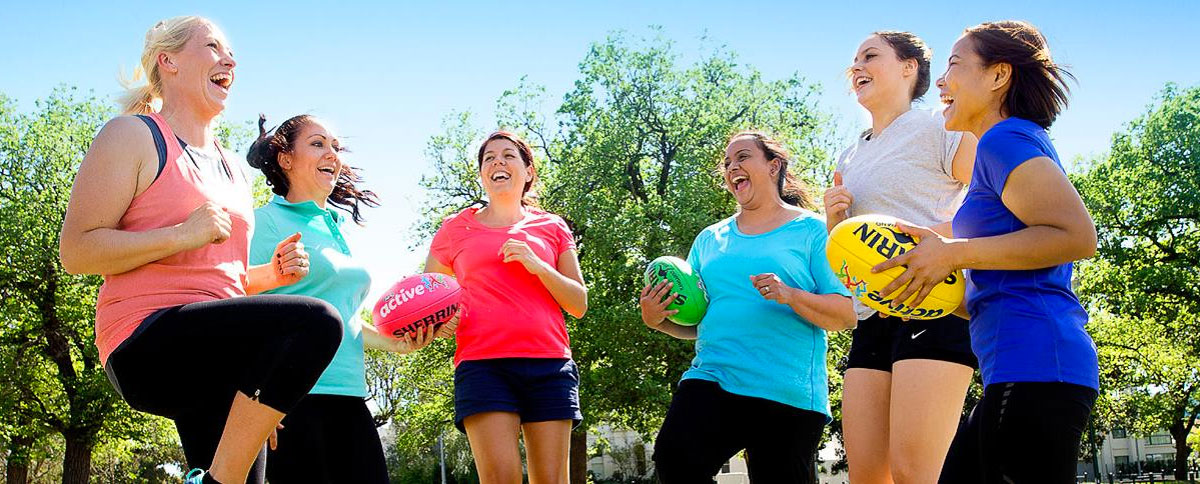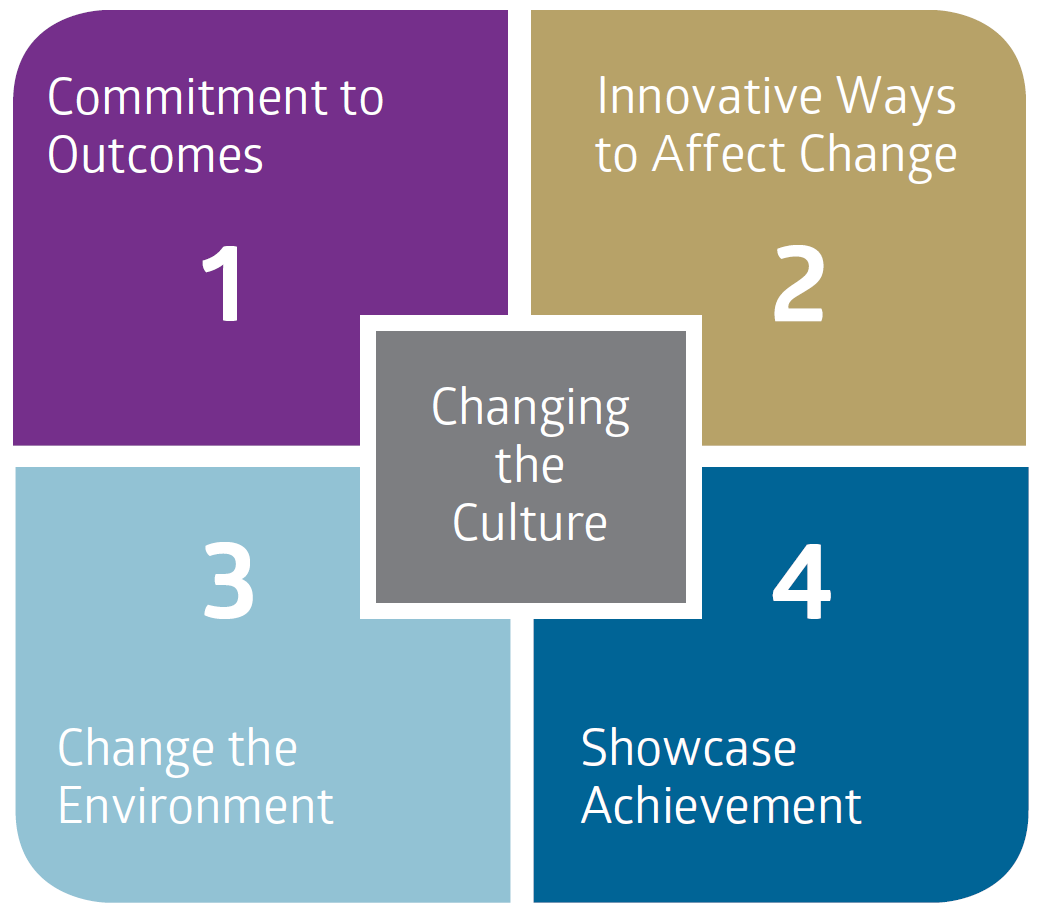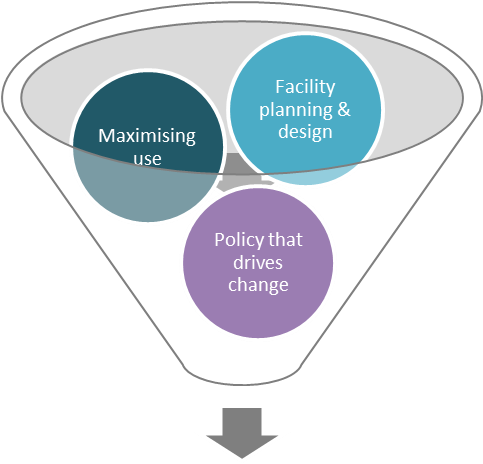Female friendly sport infrastructure guidelines
Information and advice about developing gender equitable sports and recreation facilities.

The Female Friendly Sport Infrastructure Guidelines provide information and advice on how to deliver more gender equitable environments.
The information assists community sport and recreation clubs, governing sport bodies, recreation facility management organisations, as well as local government bodies.
In Victoria, female participation rates in sport and active recreation remain lower than males, particularly in community sport and recreation club settings. The facilities at clubs play a key factor in encouraging female involvement.
As noted by the International Working Group on Women and Sport, 'Women’s participation in sport is influenced by the extent, variety and accessibility of facilities. The planning, design and management of these should appropriately and equitably meet the particular needs of the women in the community.'
Historically sporting facilities have been designed primarily to meet the needs of male participants. Today, community sport and recreation facilities are becoming outdated and, in a vast range of venues, do not provide the range of amenities that attract and sustain women and girls throughout their life. To encourage more women and girls to become active and involved in sport and active recreation, user-friendly facilities are required.
Combining cultural change with facility development in order to provide a strong foundation for participation increases is vital. The connection between these foundations can be strengthened through the implementation of the recommendations outlined in the Female Friendly Sport Infrastructure Guidelines.
Acknowledgements
The development of the Female Friendly Sport Infrastructure Guidelines has been a collaborative project between the Victorian Government (Sport and Recreation Victoria), insideEDGE Sport and Leisure Planning, ISEAL Victoria University, Institute of Sport, Exercise and Active Living, JMA Architects and Victorian sport, local government and industry professionals.
Further recommendations for the Female Friendly Sports Infrastructure Guidelines were derived from consultation with the following organisations:
- Hockey Victoria
- Netball Victoria
- Cricket Victoria
- Tennis Victoria
- Football Federation Victoria
- Women Sport Australia (formerly Australian Womensport Recreation Association)
- Belgravia Leisure
- VicHealth
- Vicsport
- Merri-bek City Council
- Glen Eira City Council
- Mooney Valley City Council
- YMCA Victoria
- AFL Victoria
- Cricket Australia.
Inquiry into Women and Girls in Sport and Active Recreation
In 2015, the Victorian Government initiated an Inquiry into Woman and Girls in Sport and Active Recreation.
The Inquiry identified 4 main themes in actively involving women and girls in sport and active recreation on both a participation and governance level. These themes have also been identified as the key drivers for change.

The theme of Change the Environment is underpinned by the principle that changing both the cultural and physical environment is fundamental to achieving sustainable outcomes.
The development of the Female Friendly Sport Infrastructure Guidelines has stemmed from the Inquiry’s sixth recommendation Deliver Female Friendly Built Environments and Equitable Facility Usage Policies.
It supports the need for guidelines to improve and create more female friendly sports infrastructure and associated environments that has been identified through industry consultation and collaboration.
The Female Friendly Sport Infrastructure Guidelines have been developed to provide information and advice to community sport and recreation clubs, governing sport bodies, recreation facility management organisations, as well as local government bodies, on how to deliver more gender equitable environments.
The guidelines will focus on 3 key enablers:
- Facility Planning and Design
- Maximising Use
- Policy to Drive Change.
What is female friendly infrastructure?
There is no one definition for female friendly infrastructure.
Instead, making infrastructure more female friendly and more family orientated consists of a range of factors and attributes, such as:
- buildings and surrounding areas that offer supporting resources, including:
- unisex change facilities that cater for the needs of both males and females
- inviting community spaces
- prioritisation of safety (Crime Prevention Through Environmental Design - CPTED)
- clean and easily accessible facilities
- adequate lighting in and around the facility
- family friendly attributes including baby change amenities.
- organisations that offer supporting resources, including:
- inclusive policies and practices
- flexible timing of programs and competitions to cater for families–children’s care.
- equality in use and flexibility in scheduling to encourage all participants.
The need for guidelines
Various research by international, national and local organisations into the environment and culture of community sport and active recreation have identified the following trends:
- women’s participation helps build social capital and cohesive communities that promote inclusion
- it is important to invest in sport facilities, equipment, and spaces that women and girls feel comfortable accessing
- the types of programs offered, opening hours, staff and visuals displayed within a facility can have as much of an effect on woman’s use of services as factors in the built environment
- women and girls participation in sport is influenced by the extent, variety and accessibility of facilities
- special attention needs to be given to the need for child care provision and safety.
Overview of the guidelines
The Victorian Government Inquiry into Women and Girls in Sport and Active Recreation has led to a focus on delivering female friendly built environments and equitable facility usage policies.
To assist the sport and active recreation sector in delivering facilities and programs that value gender equality and create an environment where women and girls feel welcome and valued, 3 enablers have been identified as the core ingredients to drive cultural change.

1. Facility planning and design
The Facility Planning and Design Guidelines address the physical environment of a community facility or sporting pavilion. They focus on key concepts involved in redeveloping existing facilities, as well as designing and building new facilities with the needs of female users in mind. The guidelines in this section cover initial planning process, design principles, facility design, colours and materials as well as building management.
2. Maximising use
This section provides guidance on female friendly sport and recreation programming and cultural behaviour. It recognises the different life stages of women and girls and what these life stages mean for sport’s programming. This section focuses on scheduling and programming that addresses female needs, and refers to diversity, role modelling, promotion and organisation integration.
3. Policy that drives change
This section provides a focus on implementing strategy through collaborative approaches. It outlines policies pertaining to funding, access and usage, as well as measuring, monitoring and reporting procedures.
Case study examples
Case study examples are used throughout each section of the guidelines to highlight current examples of best practice where successful policy, processes or change management practices have been adopted or implemented in order to encourage greater female participation in sport and active recreation and community facility usage.
Who should use the guidelines?
Sport and Recreation Victoria recommends that stakeholders or individuals involved in the planning, design, management and use of community sport and active recreation facilities and associated infrastructure refer to these guidelines when initiating new facility developments or upgrading existing infrastructure.
Local sport and active recreation clubs:
- understand users and their needs
- recognise the benefits of inclusion
- enhance understanding of building a welcoming club environment
- inform future facility development and funding opportunity planning
- inform the development of programming to increase female participation.
Local Government:
- inform local policy, strategy and municipal planning
- guide venue, site and master planning projects
- inform facility design and specification development
- highlight the need and benefits of inclusive initiatives
- develop appropriate resource allocation policies.
Sporting leagues and associations:
- support local policy, strategy and sport specific planning
- support clubs to implement inclusive practices
- promote positive sporting environments beyond the field of play.
State Sporting Organisations:
- inform state-wide inclusive planning and strategy
- guide club and venue development activities
- communicate sport and government priorities to local stakeholders
- highlight the need and benefits of inclusive initiatives
- inform the development and implementation of female friendly sport-specific facility requirements
- create links to National Sporting Organisations strategy.
Facility managers and activity providers:
- inform on implementing practices targeted toward maximising female participation
- promote and implement inclusive activities and schedules
- highlight the need for diversity in activities.
Architects, planners, developers, designers and builders:
- guide project planning and design
- highlight Victorian Government objectives for inclusion
- create consistency in community facility outcomes for females.
Links to other relevant information
- Active Tasmania: Women and Girls in Sport Strategy – view on the Active Tasmania website
- Design for Everyone Guide
- Fair Access Policy Roadmap – view on the Change Our Game website
- Females and Physical Activity – download from the VicHealth website
- Inquiry into Women and Girls in Sport and Active Recreation (PDF 916.8 KB)

- Her Sport, Her Way: Participation Planning Tool – view on the New South Wales Government website
- Helping Women and Girls to Get Active: tools and resources – download from the Sport England website
- How to get more women active: A quick guide to research and practical solutions – view on the VicHealth website
- Victorian Participation in organised sport – download the Sport participation research summary from the VicHealth website
- Active Tasmania: Women and Girls in Sport Strategy – visit the Active Tasmania website.
Female friendly sport infrastructure guidelines index
Section 1: Planning and Design
The Victorian Government Inquiry into Women and Girls in Sport and Active Recreation recognises the need to achieve equitable provision of, and access to, high quality female friendly sport and active recreation infrastructure to support existing sport and recreation opportunities for women and girls.
Go to Section 1: Planning and Design.
Section 2: Maximising use
To build the capacity of sport and active recreation clubs and centres, there is a need to recruit and sustain more women and girls and to consider their needs to maximise usage.
Go to Section 2: Maximising use.
Section 3: Policy that Drives Change
Influencing and creating cultural change within an industry, the community or within a sport and active recreation club environment can be a challenging and often time consuming process. However, the benefits of implementing positive change far outweigh the challenges.
Go to Section 3: Policy that Drives Change.
Female Friendly Sports Infrastructure Guidelines References
Resources and references used throughout the guidelines.